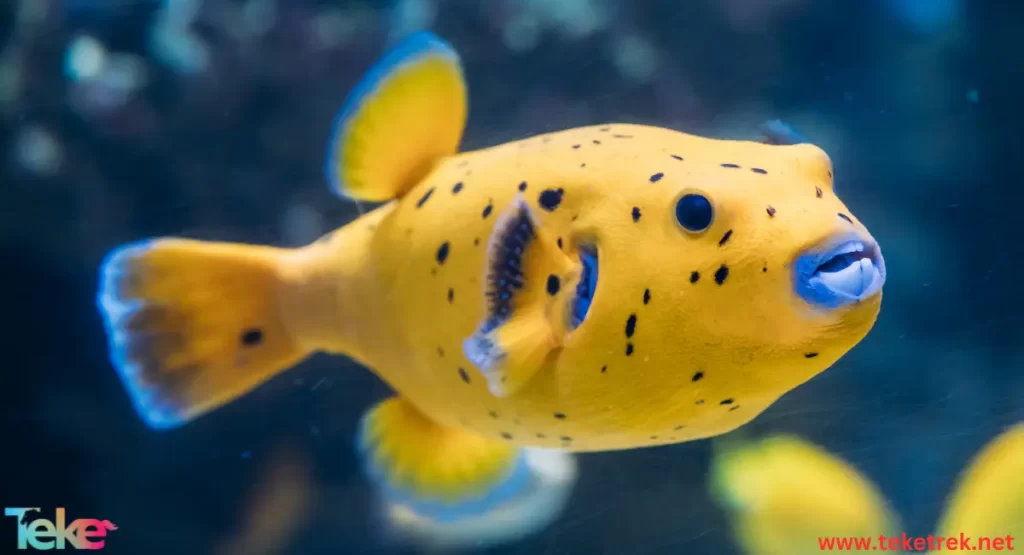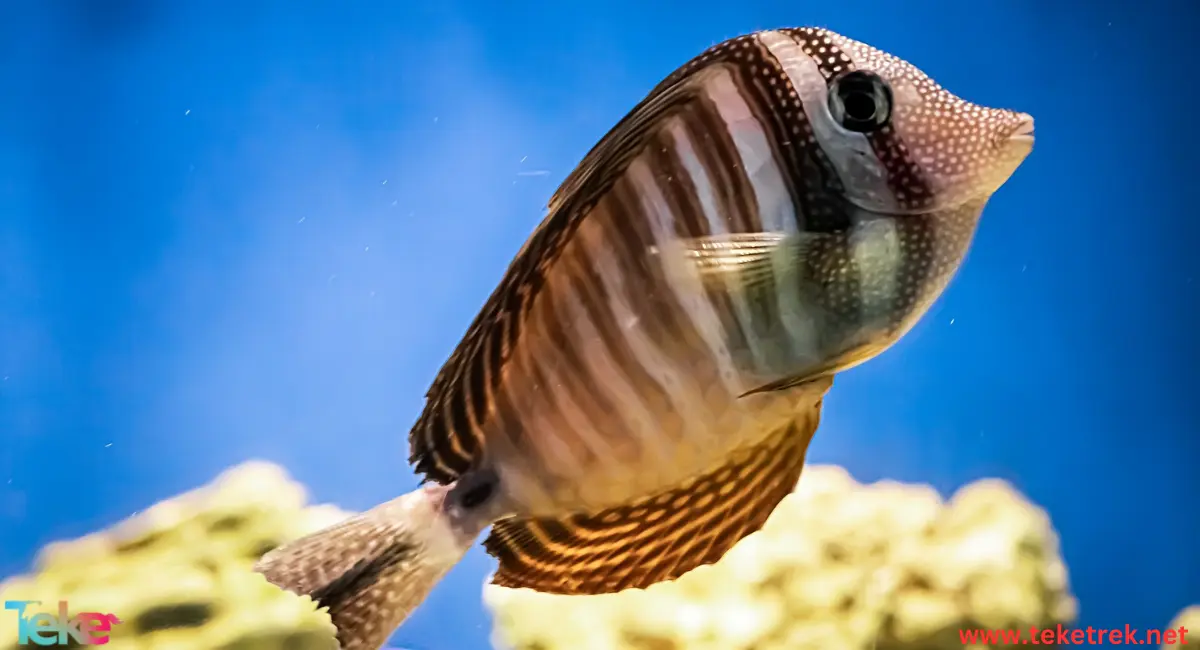The puffer fish is one of the most famous types of fish. It is found in the depths of the blue oceans, and is characterized by its bright colors and charming beauty. It is considered one of the most amazing and impressive types of fish. The puffer fish is characterized by its unique ability to control air gas inside its bladder, which allows it to float on the surface of the water in an exceptional way. The puffer fish is one of the most interesting and studied marine creatures. It has unique specifications that make it different from other types of fish. The puffer fish lives in warm and temperate waters. It feeds on algae and small marine life. Below, we explore the most important details related to it on the Tourism website.Let’s explore more about these fascinating creatures from teke trek:

?What are balloon fish
Ballon fish, scientific name: Tetraodon. It is a genus of fish that belongs to the pufferfish family, of the pufferfish order. It was given this name because it can inflate its body like a balloon.
Puffer fish species
There are more than 120 species of puffer fish, distinguished by their long, pointed bodies with swollen heads, and they are divided into the following types:
Blackish green puffs:
My line blows:
Fluffy fluffy:
My killer blows:
Mbo blows:
My river blows:
Blowing red lines:
Specifications of puffer fish
The balloon fish is a smooth fish, some of its species are covered with spines. It has 4 teeth so it belongs to the Tetraodontidae family. That is, fish with 4 teeth. This family can swallow water to inflate itself and double its size, thus scaring away predators.
The balloon fish reaches a length of 110 cm. It weighs up to 7 kg. The balloon fish has an elongated body compressed on the sides.
The primary habitat of the balloon fish
The balloon fish is one of the invasive fish species that has spread in the Mediterranean Sea due to climate change. It entered it through the Suez Canal. It caused a negative impact on the economy of the Mediterranean countries, due to its attacks on nets and fishing equipment.
Most balloonfish species live in marine or brackish waters, but some can enter fresh water. There are approximately 35 species that spend their entire life cycle in fresh water, such as those found in Africa, Southeast Asia and the separate tropical regions of South America.
What is the food of balloon fish?
Balloon fish depend on crab, shrimp and other small fish for their food. It feeds during the day and hides at the edges of small caves and sea rocks at night.
Treating the symptoms of pufferfish poisoning:
If you have been poisoned by puffer fish, you should follow these steps:
Seek health care quickly.
Help the injured person to vomit within several hours of eating the fish if he is awake and conscious.
Turn the person onto his side quickly.
Artificial respiration is necessary so that a person does not become paralyzed, as it can help him survive until he reaches the emergency department.

What are the most important facts about puffer fish venom?
Balloon fish have no antidote.
Some Japanese chefs rely on this type of fish as a beneficial food, and they cook it properly.
The cultured species is non-toxic.
The type Fogo rubrus is used to map the human genome.
Pain reliever for victims of neuralgia and rheumatoid arthritis.
Defense mechanisms of pufferfish:
Its natural defenses help in covering its slow movement, as it moves by using its dorsal, pectoral, as well as caudal and anal fins. To be able to maneuver easily.
This balloon fish can also overcome its slow movement through its excellent eyesight and the ability of its tail fin, which helps it generate great speed. Which is one of its most important means of defense against predator
Common questions about balloon fish:
There are many common questions asked by people in general and those interested in puffer fish in particular. The most important of these questions are:
1- How does the balloon fish avoid predators
The fish inflates its stomach to take the shape of a ball, and quickly swallows large amounts of water and air when there is any danger or threat.
Are balloon fish poisonous?
Yes, balloon fish contain a toxin called terodotoxin, which is about 10,000 times more toxic than arsenic. It is found under the skin, in the gonads and liver.
3- What are the most important symptoms of balloon fish poisoning?
Symptoms of poisoning when eating this fish are numbness and numbness, which begins after about half an hour and then spreads to the rest of the body. The person suffers from digestive disorders such as diarrhea and abdominal pain, in addition to the inability to walk and paralysis of the respiratory muscles.
What is the name of balloon type fish?
Ballon Fish.
Bufferfish.
Blowfish.
Swellfish.
Fugo.
Globefish.
Can you eat balloon fish?
This fish is a popular dish in Japan, where it costs up to $200 in restaurants.
6- What is the scientific name of the puffer fish?
Tetraodon implutus.
Tetraodon leiurus.
In short, the balloon fish is a strange and beautiful marine creature that arouses the amazement and admiration of many. Care must be taken when handling it to avoid any toxicity or skin irritation. This fish is considered part of the diversity of wonderful and amazing marine life that must be preserved and protected. By learning about these unique creatures, we can increase our understanding of the marine environment and appreciate their beauty and importance in our lives and in the lives of other marine creatures.





